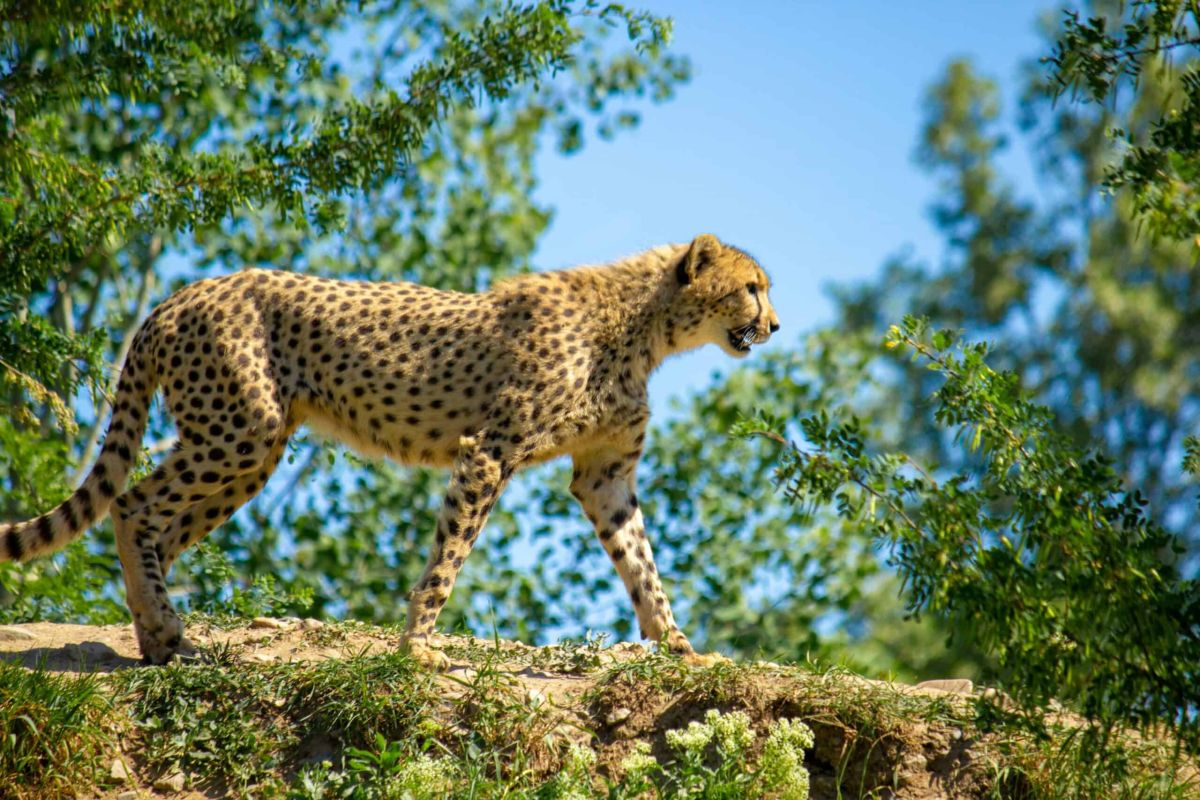Cheetahs: The Pinnacle of Speed and Grace

Cheetahs, with their lithe bodies and striking coats adorned with distinctive black spots, are among the most fascinating and celebrated animals in the world. As the fastest land animals, they can reach astonishing speeds of up to 75 miles per hour (121 kilometers per hour) in short bursts covering distances up to 500 meters. But there’s much more to these remarkable creatures than just their incredible speed.
Anatomy and Adaptations
Cheetahs possess a unique physical structure that enables their unparalleled speed. Their lightweight bodies and long legs are complemented by a flexible spine that allows for a longer stride. Additionally, their large nasal passages take in more oxygen while running, and their specialized respiratory system helps circulate this oxygen efficiently.
Their unique “non-retractable” claws provide better grip, similar to a track athlete’s cleats, allowing them to maintain traction while sprinting at high velocities. Cheetahs also have large adrenal glands that produce adrenaline during high-speed chases, giving them that extra burst of energy when pursuing prey.
Hunting and Diet
Cheetahs are predominantly diurnal hunters, meaning they hunt during the day. Their hunting strategy relies on stealth and speed rather than endurance. They use their keen eyesight to spot potential prey, which typically includes small to medium-sized ungulates like gazelles and impalas. Cheetahs approach their prey with a stealthy, low-to-the-ground stalk before launching into a rapid chase.
Their exceptional speed allows them to close in quickly, but they tire easily; thus, they rely on short bursts of energy to catch their meals. After a successful hunt, cheetahs need a recovery period to catch their breath before eating, as the physical exertion of their sprint has drained their energy reserves.
Social Structure and Behavior
Cheetahs are known for their intriguing social structures. Unlike most big cats, which are solitary, cheetah social dynamics vary. Female cheetahs often lead solitary lives, taking care of their cubs and teaching them essential hunting skills. Males, however, can form small groups called coalitions, often consisting of brothers. These coalitions offer increased success during hunts and protection against rival males.
Habitat and Range
Historically, cheetahs were found throughout Africa and even into parts of the Middle East and Asia. Today, their populations are primarily concentrated in sub-Saharan Africa, with a small population of Asiatic cheetahs remaining in Iran. Cheetahs prefer open savanna and grassland habitats where they can spot their prey easily and have ample space to sprint.
Conservation Status
Unfortunately, the global cheetah population has been steadily declining due to habitat loss, human-wildlife conflict, and poaching. The International Union for Conservation of Nature (IUCN) categorizes the cheetah as “Vulnerable,” with some subspecies facing the threat of extinction. Conservation efforts are underway to protect their habitats, mitigate human-wildlife conflict, and increase genetic diversity among dwindling populations. Organizations are working tirelessly to educate local communities about the importance of cheetah conservation, promoting coexistence and sustainable practices.
Conclusion
Cheetahs are truly magnificent creatures, emblematic of both the beauty and fragility of our natural world. Their exceptional adaptations for speed and hunting, combined with their unique social behaviors, make them a remarkable subject of study and admiration. As we continue to learn more about these incredible animals, it is imperative that we take action to protect their habitats and ensure their survival in the wild. By raising awareness and supporting conservation efforts, we can help preserve this living emblem of speed for generations to come. Whether through wildlife documentaries, volunteer efforts, or donations to conservation organizations, every little bit contributes to the ongoing safety of the cheetah. Together, we can cherish and protect these extraordinary creatures that continue to inspire awe in our hearts and minds.



